Name Burebista Burebista Reign 82–44 BC Died 44 BC | Role King Assassinated 44 BC | |
 | ||
Clash of Kings - BUR Alliance (Guard of Burebista) & Best Fighter
Burebista (Ancient Greek: Βυρεβίστας, Βοιρεβίστας) was a Thracian king of the Getae and Dacian tribes from 82/61 BC to 45/44 BC. He was the first king who successfully unified the tribes of the Dacian kingdom. The Dacian kingdom comprised the area roughly located between the Danube, Tisza and Dniester rivers and covering modern day Romania. In the 7th and 6th Centuries BC it became home to the Thracian peoples, including Getae and Dacians. From the 4th century to the middle of the 2nd century BC the Dacian peoples were influenced by La Tène Celts who brought new technologies with them into Dacia. Sometime in the 2nd century BC, however, the Dacians expelled the Celts from their lands. Dacians often warred with the Getae, however, the relative isolation of the Dacian peoples located around the Carpathian mountains allowed them to survive and even to thrive. By the 1st century BC, the Dacians had become the dominant tribe.
Contents
- Clash of Kings BUR Alliance Guard of Burebista Best Fighter
- Clash of kings guards of burebista kingdom 267
- Dacian Kingdom
- Date of Accession
- Development of Burebistas polity
- Neighbouring tribes
- Capture of Greek Cities
- Caesars civil war
- Death
- Dacia after Burebista
- Legacy
- References

From 61 BC onwards, Burebista pursued a series of conquests that expanded the Dacian kingdom. The tribes of the Boii and Taurisci were destroyed early in his campaigns, further pursuing the conquest of the Bastarnae and probably Scordisci peoples. He led raids throughout Thrace, Macedonia and Illyria. From 55 BC, the Greek cities on the coast of the Black Sea were conquered one after another. These campaigns inevitably culminated in conflict with Rome in 48 BC when Burebista gave his support to Pompey. In turn this made him an enemy to Caesar who became determined to start a campaign against Dacia. This plan fell through in 44 BC when he was assassinated. Soon after, Burebista himself was assassinated in a plot by the Dacian aristocracy.
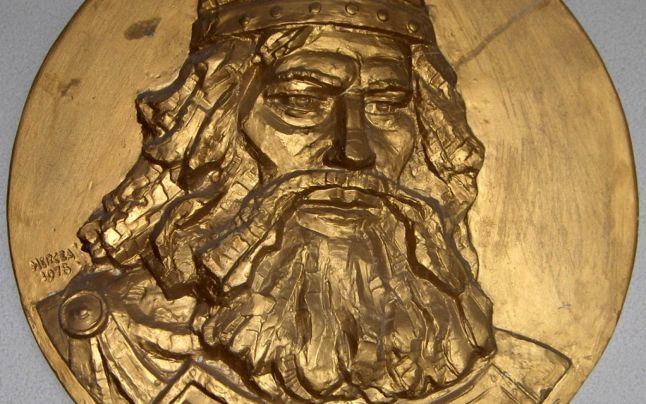
After Burebista's death, the empire he had created dissolved into smaller kingdoms. From the reign of Tiberius to Domitian, Dacian activity was reduced into a defensive state. The Romans abandoned plans of mounting an invasion against Dacia. In 86 AD, however, the king Decebalus successfully re-united the Dacian kingdom under his control. Domitian attempted a hasty invasion against the Dacians which ended in disaster. A second invasion later brought peace between Rome and Dacia for nearly a decade, until in 98 AD Trajan became emperor. Trajan also pursued two conquests of Dacia, the first in 101–102 AD which concluded in a Roman victory. Decebalus was forced to agree to harsh terms of peace, but, did not honour them. This sparked a second invasion of Dacia in 106 AD which ended the independence of the Dacian kingdom, and brought about its break-up.
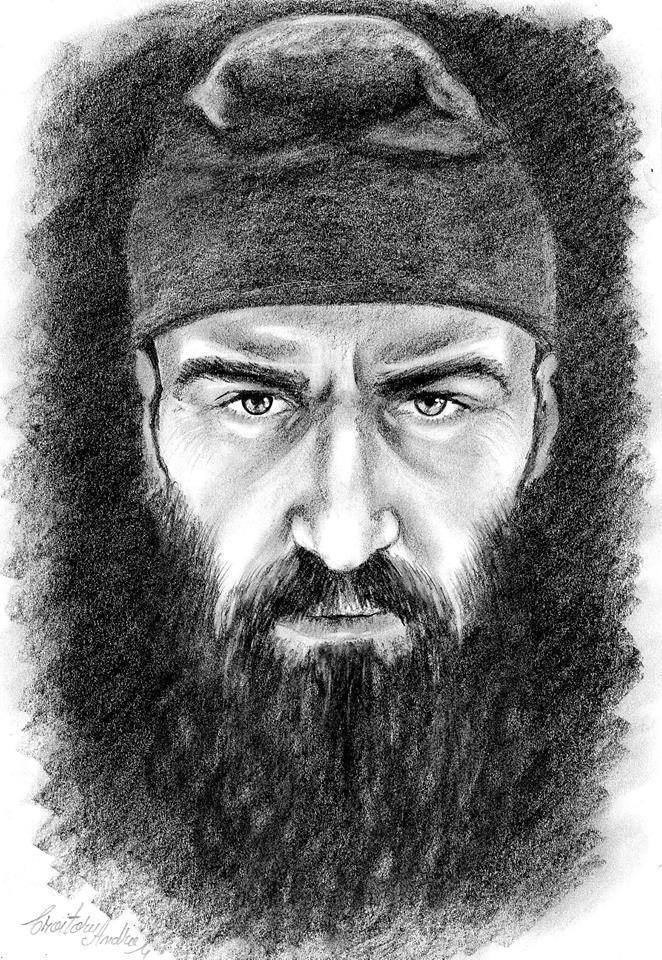
Clash of kings guards of burebista kingdom 267
Dacian Kingdom
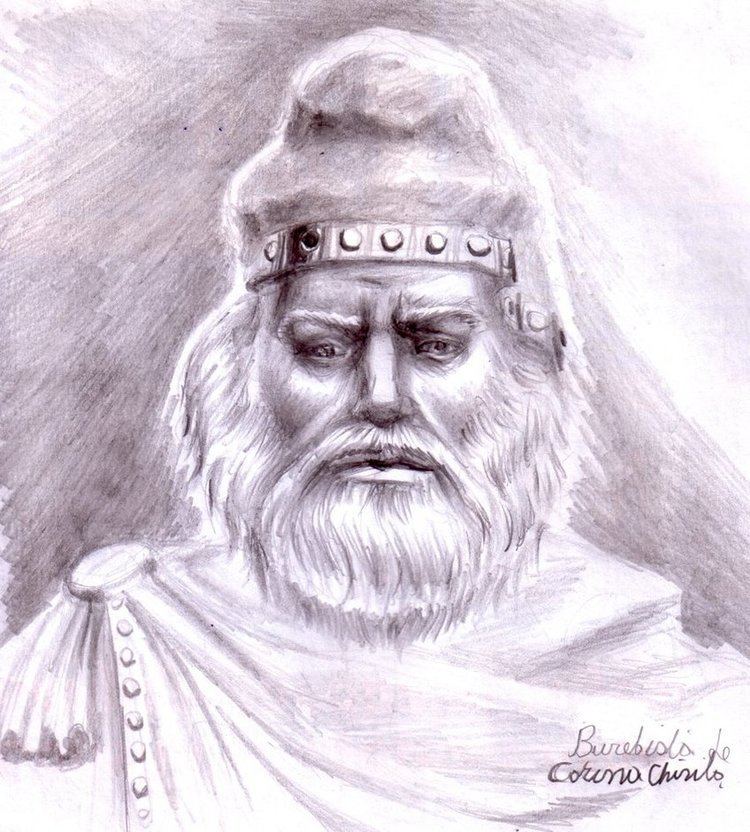
The area roughly located between the Danube, Tisza and Dniester rivers - approximately coinciding with modern-day Romania - became home to a varied group of Thracian peoples including Getae and Dacians sometime around the 7th to 6th centuries BC. The Getae and Dacians are related, but, distinct peoples that are sometimes treated as a single group under the name of Geto-Dacians. The Getae and Dacian peoples held many cultural and linguistic similarities. The Getae living in the lower Danube basin were able to establish regular trading commerce with the Greek cities along the coast of the Black Sea. The Dacians were located in the Carpatho-Danubian basin along the southern border of the Carpathian mountains. This geographic isolation allowed the Dacians to survive catastrophic struggles - often with the Getae - and thrive to become the dominant tribe by the 1st century BC.
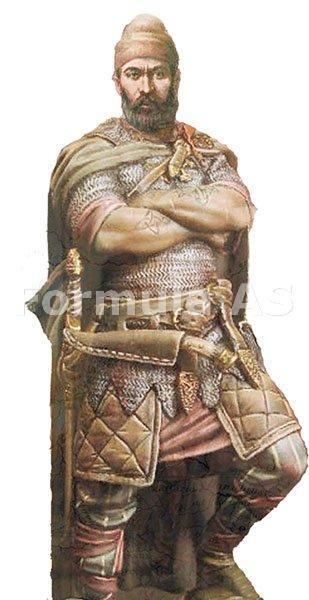
Before Burebista became king, the Dacians experienced a succession of kings through the period of 450 to 60 BC. The kings included Dromichaetes, Oroles and Rubobostes in the third and second centuries BC. From the 4th century BC until sometime in the 2nd century BC the La Tène Celts of the Danube, Alpines and Balkans influenced the Dacian culture. La Tène material culture was found in the central and north-west of Dacia. The development of a La Tène based economy in 3rd–2nd century BC allowed the consolidation of political power through tribal unions. Such regional unions were found both among the Transylvanian Dacians under the rule of Rubobostes, and the Moldavian and Wallachian Getae in Argedava. It is from the La Tène that the Dacians were introduced to the potter's wheel, superior metal-working techniques and probably a tradition of coinage. Homes were a combination of Celtic and Dacian pottery, and certain Celtic style graves contain Dacian style vessels. This suggests a sort of co-existence and fusion between the cultures. Sometime after around 150 BC, however, evidence of La Tène culture peters out, around the same time the Dacian culture began to mature as evidenced by population and economic growth. Under Rubobstes the authority of the Dacians appears to have increased, thus ending the dominance of the Celtic culture, and leading to the Celts being expelled from the area or merged into the culture, or both at once. There is archaeological evidence to suggest that relations between Dacians and Celts living in the areas north and west of Dacia continued. Painted ceramics of late La Tène-style have been found in Dacian sites in west and central Dacia. Some of these were imported while others were made by Dacian potters imitating Celtic style. A stable monarchy, however, only developed when Burebista became king. Burebista's accession came with the expulsion of Celts around 60 BC when his forces moved through to the middle Danube region, and with the support of the religious establishment and leaders in Dacia which brought around a stricter moral code in the Dacian kingdom. Around this time pottery of the Dacian style began appearing in Celtic settlements in Central Europe, including former Yugoslavia including in Gomolava, Yugoslavia and Budapest, Hungary.
Date of Accession
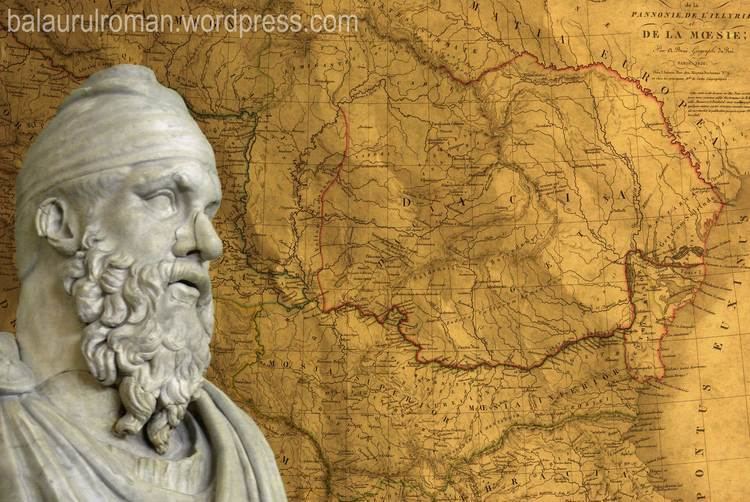
The exact date that Burebista came to reign over the Dacians is debated among sources; University of Illinois professor Keith Hitchins give a starting date for Burebista's reign of 82 BC, while historian Matthew Bunson, and authors John Middleton and Michael Schmitz suggest a starting date around 61-60 BC. The historian John Koch states that Burebista founded an empire sometime during the 1st century BC and that around 61 BC Burebista expelled the Celts and moved into the middle Danube.
Development of Burebista's polity
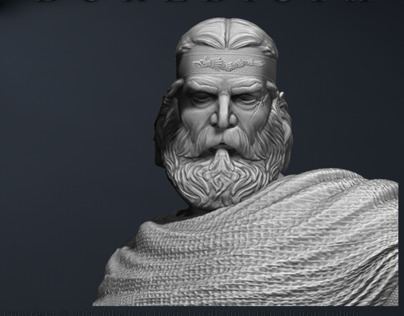
This alliance was probably a weakly centralized state, with a military organization similar to the one of the Hellenistic Kingdoms. The exact degree of centralization is a matter of debate, with archaeologists, such as Archeologist Kris Lockyear, denying the existence of a state, because the archaeological evidence shows regional diversity and only a few region-wide trends. Others, such as Historian Alexandru Diaconescu, dispute this and conclude that there was a centralized political structure.
In the Orăştie Mountains, Burebista built a system of stone fortifications on higher ground; the most important of such hill forts are located today in the villages of Costeşti, Blidaru, Piatra Roşie and Băniţa. These citadels exhibited Greek military architecture and coupled with the presence of both Burebista and his armed forces, served to secure the Dacian people internally.
Neighbouring tribes
From around 61 BC Burebista began to lead a series of campaigns of conquest against neighbouring tribes and clans. In 60/59 BC he defeated and conquered the Boii, who were led by Critasiros, and the Taurisci tribes dwelling in the Middle Danube, in modern Bohemia and Slovakia. The Boii had established a tribal presence in the areas now occupied by eastern Austria and south-western Slovakia and Hungary sometime in 75–50 BC. The Boii extended their influence eastward towards modern day Bratislava, Slovakia around 64-63 BC. It is these Boii tribes that were east of the Alps that would come into conflict with the Dacians and would be heavily defeated in 50–40 BC. These conquests were followed by the destruction of the Bastarnae peoples. Similarly, he conquered a tribe that Strabo describes as living among the Illyrians and Thracians - most likely the Scordisci - while simultaneously raiding throughout Thrace, Roman Macedonia and Illyria.
Capture of Greek Cities
Beginning from around 55 BC, Burebista annexed the Greek cities on the coast of the Black Sea, occupying the Greek fortresses from Olbia to Apollonia, as well as the Danubian plain all the way to the Balkans. These conquered cities were; Olbia, Tyras, Histria, Tomis, Callatis, Odessos, Messembria, Apollonia and Dionysopolis. Dionysopolis was, however, in good relations with Burebista. An inscription dating to 48 BC found in Dionysopolis and in honour of Akornion of Dionysopolis describes Akornion as the "first and greatest friend" of Burebista. Akornion was sent as an ambassador to Pompey to claim the title of "king of kings" for Burebista to be used within the Hellenistic kingdoms of the Balkans and the near east.
Caesar's civil war
Burebista inevitably came into conflict with Rome. During the Roman civil war of 49-44 BC, Pompey gained the support of Burebista through Akornion of Dionysopolis. Pompey himself had recognized Burebista's and Dacia's might with their successful conquests against the Greek Black Sea cities. Caesar, however, ended any alliance between Pompey and Burebista at the Battle of Pharsalus. Caesar was also aware of the growing strength of the Dacians and had himself planned to lead an attack against Burebista. Burebista at this time had a force that may have numbered up to 200,000 men - though it is disputed whether this force was an actual military force or the number of able bodied men within the kingdom. Regardless, Dacia was a formidable power which Caesar perceived as a threat to Rome. But Caesar was never able to start his intended campaign because he was assassinated in 44 BC. Burebista met with the same fate as a civil uprising had him killed in either 45 or 44 BC.
Death
Burebista only outlived Caesar for a short time. In the same year he was assassinated in a plot by the Dacian aristocracy, who felt that a centralized state reduced their privileges. After his death, the Dacian kingdom dissolved, with the exception of the nucleus around the Orăştie Mountains, while the rest became various smaller kingdoms. After Burebista's death the kingdom was divided into four parts ruled by the religious elite. By the time of Augustus Dacia broke further down into five parts.
Dacia after Burebista
In the time after Burebista's death and between the rule of Domitian and Tiberius, Dacian activity was minimal. The Dacians were forced into a defensive state where their main activity was keeping the Romans out of Dacian territories. The regional factions that remained posed no substantial threat to the Roman empire and the Roman sources themselves stop mentioning plans of Roman invasion during this time. Dacian power, resurged during the reigns of Duras - who reigned 68–87 AD - and peaked during the reign of Decebalus - who reigned from 85/87-106 AD. By this time the Dacian tribes had united once more, under the ruler of Decebalus, and again posed a threat to Rome.
Decebalus' reign saw nearly constant warfare between the Dacians and Roman administrations south of the Danube. Around 85 AD raiding resumed in Moesia, Illyria and Macedonia culminating in the death of the Roman Governor of Moesia, Oppius Sabinius. In response Domitian launched a campaign the same year under the command of the Praetorian Prefect Cornelius Fuscus. Domitian ignored Decebalus' offer of peace to Rome, an error which caused them to suffer a disastrous defeat, losing Fuscus, his forces, and the Roman standards and war machines. A second expedition was launched in 88 AD this time under the command of Tettius Julianus. This second campaign was somewhat victorious as both sides suffered massive casualties in battle. However, revolts and defections forced Domitian to negotiate a hasty peace treaty with Decebalus in 89 AD. This peace had benefits and costs to both sides; Rome had to pay financial tributes and provide technological assistance to Dacia, in exchange Dacia effectively became a client kingdom of Rome acting like a bulkhead to the empire by separating Rome from other warring tribes.
This peace lasted for around a decade, until Trajan became emperor in 98 AD. Immediately upon becoming emperor, Trajan travelled to the frontier stretching from Pannonia to Moesia. Here he strengthened the fortifications. In 101–102 AD Trajan assembled an army of up to 150,000 men to send against Decebalus' 50,000. The army was split into two and entered into Dacian territory at two points along the frontier. The columns met at Tibiscum and marched together towards Sarmizegetusa. At Tapae they encountered and defeated the Dacian force. This in turn forced Decebalus to sue for peace, which Trajan agreed to, but, he imposed harsh terms against the Dacians. Decebalus failed to meet the terms of the peace and in 105 Trajan launched a second campaign against him. By 106, Trajan completed the conquest of Dacia and ended its existence as an independent kingdom.
Legacy
The icon of fearless and noble Dacians as predecessors to modern Romanians was augmented and impressed by nationalist movements in the late 1920s and 1930s. On the one hand, Dacians have a significant role in creating a history of an ethnically pure origin for Romanian people. However, at the same time, they have a much more relegated role in describing Romania as a civilized and cosmopolitan nation, less so than Romans do.
In the 1960s statues were erected for the two leaders of the Dacian kingdom, Burebista and Decebalus. These came as part of a gradual process of disassociation of Socialist Romania for the Union of Soviet Socialist Republics (USSR). The statues depict the kings as freedom fighters, and nationwide celebrations were held for the anniversaries of ancient battles. Additionally two government-funded film productions were created as part of this same process. Both of the films focus on the history of Dacia in the first and second century AD and the exploits of Decebalus, while Burebista is almost ignored.
In Romania, starting in the 1970s, the Nicolae Ceauşescu regime used a nationalistic and questionable interpretation of ancient history (Protochronism) as a way to legitimize its own rule. For instance, Burebista, a great conqueror, was seen as merely a "unifier" of the Dacian people. In 1980 the Romanian government declared a celebration of the 2050th anniversary of the founding of the "unitary and centralized" Dacian state of Burebista, drawing comparisons with Ceauşescu's Romania and claiming an uninterrupted existence of the state from Burebista to Ceauşescu. The epic movie Burebista (1980) based on the king's life was released that year, celebrating him as the Romanian pater patriae. This commemoration led the press to note "similarities" between Burebista and Ceauşescu, and even professional historians such as Ion Horaţiu Crişan spoke about Burebista in ways similar to the ways party activists spoke about Ceauşescu.
Burebista and his descendants are considered by the Romanian people to be the true ancestors of their nation, Romania. However, historian László Kürti describes this as an imaginary history, and notes that during the regime of Ceauşescu this alternate history was used as a political device. In 1984 the brother of President Ceauşescu, Ilie Ceauşescu, published a treatise stating that; "[t]he archaeological evidence conclusively shows the uninterrupted ethnic, political, and military continuity of the Romanians." Kürti also notes that similar political devices are used by Hungarians to promote a claim to the same Transylvanian region that Romanians possess.
